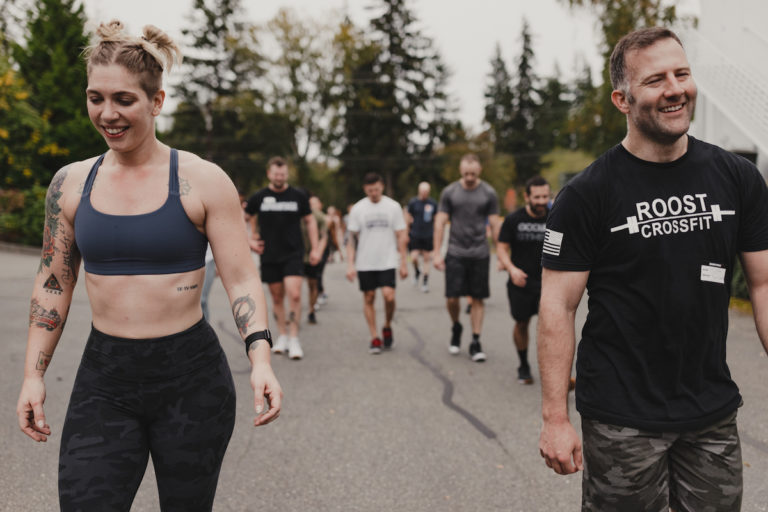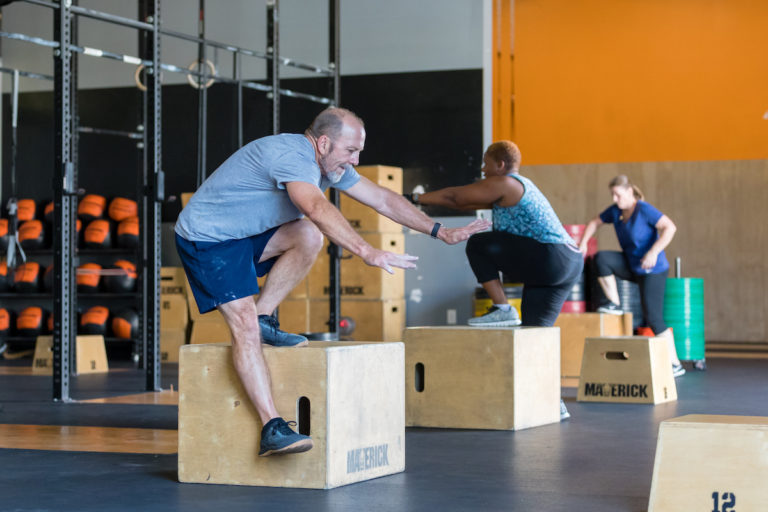CrossFit’s goal is to increase health, happiness, and performance. Ground zero for this mission is the CrossFit affiliate. The job of the coach and affiliate owner is no small task. It requires a commitment to changing behavior, inspiring athletes every day, and building confidence in athletes so they can achieve long-term improvements in health, happiness, and performance.
Our behavior can be defined as how we act in response to a stimulus, whether it be internal or external. In order to act, we must generate a hierarchy of actions based on the information coming in and our most probable behavior. People tend to make positive changes to their behavior when they believe they can be successful. This is called self-efficacy. It is one’s belief in their ability to succeed at a specific task, and it is one of the most accepted constructs in behavior change theory.
Behavior change comes in many forms, such as:
- Convincing an athlete they have what it takes to start CrossFit.
- Teaching an athlete how to scale correctly.
- Giving athletes tools to change how they respond to stress.
- Modeling how to embrace challenges.
- Teaching athletes how to improve their diet.
Fortunately, the CrossFit affiliate is set up perfectly to continuously increase self-efficacy and consequently change behavior.
A common misconception about self-efficacy is that it applies to any and all activities or tasks. But in truth, self-efficacy is task specific. In research on self-efficacy, participants are often provided a questionnaire to determine their self-efficacy for a given task. For instance, if the researchers were determining how self-efficacy was related to pull-up performance, the researcher might provide a survey that asks:
How confident are you that you can perform more than 25 pull-ups?
- Not at all confident
- Slightly confident
- Somewhat confident
- Quite confident
- Extremely confident
Researchers would then use these responses to determine self-efficacy in completing this specific task, measure the outcome of the task, and compare it to the response scores. Typically, it is found that those with higher self-efficacy scores perform better on the test. As a coach, you don’t have to walk around giving athletes self-efficacy surveys, but it is useful to ask some questions before taking on something new. For instance, on an athlete’s first day in the gym, you might say something simple like: “Welcome to your first day. Here is what we are going to do today. How do you feel about your abilities to complete this?” The answer given and how it is given can tell you a lot about this athlete. This type of self-reflection is called metacognition. The athlete is evaluating themselves, the task, and their belief in their ability to perform. If the answer is, “Well, I haven’t worked out in 15 years, and I feel like I’m terribly out of shape, so I’m expecting it to be pretty bad,” you know you’re going to have to find ways to make it a more positive experience. You’re going to have to increase their belief that they can be successful.

CrossFit Affiliate Summit, CrossFit Advantage, Oct. 17, 2021
Self-efficacy can be increased in multiple ways. One of the most impactful ways to increase self-efficacy is through mastery experiences. These are successful experiences that increase your belief in yourself to repeat that behavior. There are a lot of successful outcomes in CrossFit that can be celebrated. When it comes to the new athlete, pay close attention to progressing through a new skill, learning a new skill, increasing range of motion for a challenging movement, scaling properly to meet the stimulus of the workout, consistent attendance, or even subjective measures like a more positive attitude.
One of the best ways to make use of mastery experiences is to help your athletes create goals. These should be strategically developed to offer a challenge but also reduce the chance of failure. Goals shouldn’t be so easy that they provide a false sense of confidence, completely derailing their progress when failure finally occurs. Also, they should not be so far-reaching that they reduce confidence and diminish any established self-efficacy. Goals should be meaningful to the athlete. If there is value associated with the goal, there will be a high sense of reward when the goal is achieved.
